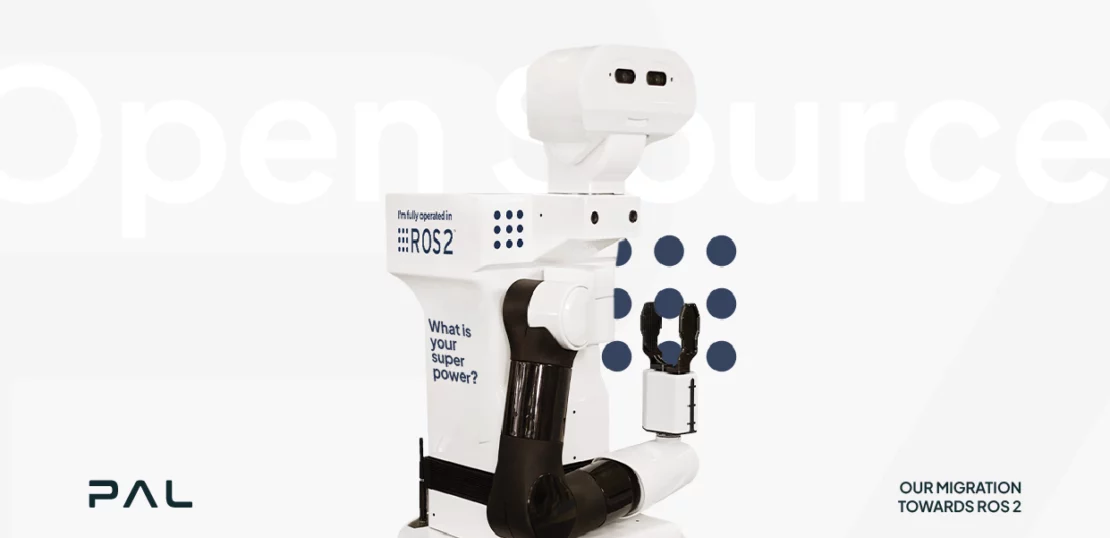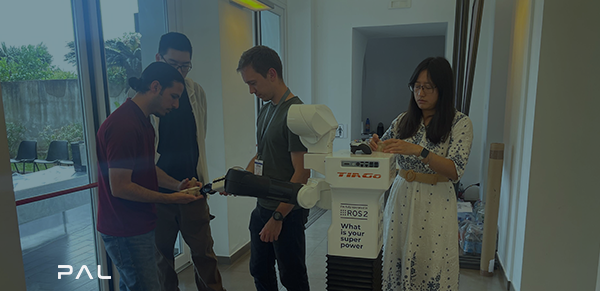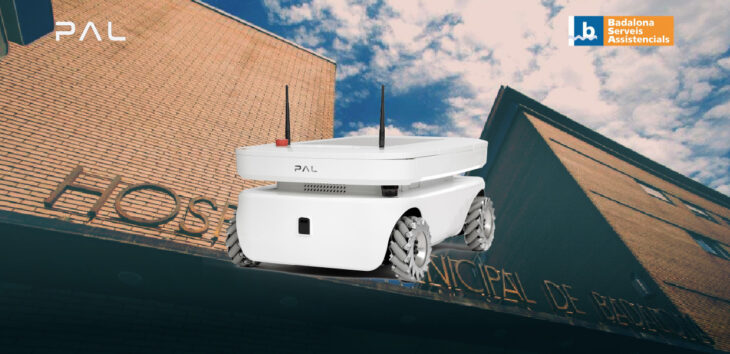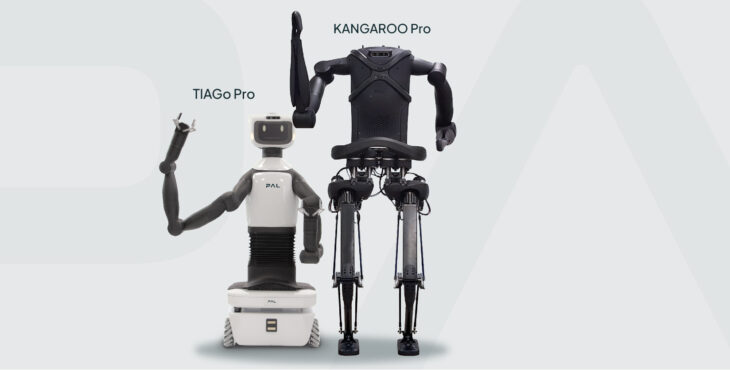
At PAL Robotics, open-source technology isn’t just something we use, it’s something we believe in and a key enabler of how we help our customers succeed. From the very beginning, ROS (Robot Operating System), and now ROS 2, has shaped how we design, build, and support our robots. By adopting and contributing to the open-source ecosystem, we ensure our customers benefit from advanced, collaborative development that drives practical, impactful outcomes.
Why is open source important?
Since the early days of PAL Robotics, our development strategy has been deeply tied to the open source ecosystem, and to ROS in particular. This technology has allowed us to accelerate development, collaborate with the research community, and bring innovative capabilities to customers in both academia and industry.
Thanks to ROS, researchers and developers familiar with the ecosystem can start using our robots right away. Whether it’s integrating navigation, SLAM, motion planning, or whole-body control, ROS-based systems mean fewer barriers, faster results, and easier prototyping. As Sai Kishor, robotics engineer, said:
“Open source gives you a platform where you exchange ideas… It’s a community of people doing the same effort to get things done”.
This collaborative environment accelerates problem-solving, as many challenges we face are often already tackled and shared by others. These features, widely shared across the ROS ecosystem, enable each user to develop and deploy complex systems more efficiently while contributing back to the community.
But beyond technical acceleration, open source aligns with our mission: creating robots that improve people’s quality of life. We believe open-source tools make robotics more accessible and easier to maintain, while fostering a collaborative environment where innovation happens faster. As Luca Marchionni, PAL Robotics’ CTO, explains:
“We want to have a strict relationship with academia, industry and research in general. It’s not just a single company effort. We need to share resources, we need to share technology”.
From ROS 1 to ROS 2: Leading the transition

As ROS 2 emerged, we recognized the need to evolve alongside the ecosystem. Moving to ROS 2 is more than an upgrade, it’s a company-wide effort to redesign, refactor, and future-proof our entire software stack. This meant not only updating internal systems, but also ensuring that our customers could make the transition without disruption.
The migration effort touched every part of our architecture. We adapted our frameworks, introduced new capabilities, and contributed actively to the broader ROS 2 community. One of our key contributions is to the development of ros2_control, now widely used across robotic platforms. This hands-on involvement ensured we weren’t just adopting ROS 2, we were shaping it.
All of this work also translates directly into benefits for our customers: faster software, more robust performance, and better support for real-time, secure, and scalable robotic systems.
Why staying on ROS 1 is risky
Although ROS 1 played a foundational role in modern robotics, it no longer meets the requirements of today’s applications. It lacks native support for critical features such as security, real-time control, and scalable communication, all essential for deploying robots in dynamic production-level environments.
Teams that continue to rely on ROS 1 face increasing technical debt. With ROS 2, developers gain access to improved middleware, system modularity, and real-time capabilities. These improvements aren’t optional, they’re necessary for building reliable, secure, and scalable systems.
At PAL Robotics, we’ve already helped several customers migrate their platforms from ROS 1 to ROS 2, unlocking new levels of performance and flexibility. From an engineering and business perspective, the message is clear: the sooner you migrate, the better equipped you’ll be for the future.
Open source as a long term strategy
Our involvement in ROS 2 is just one part of our broader commitment to open-source collaboration. We see open source as an investment in making the ecosystem better; better software, stronger communities, and a more sustainable robotics industry. As our Chief Business Officer, Carlos Vivas, explains:
“We have to use the technology that’s out there in order to make better robots (…) Open Source technology is something we need to do in a sustainable way”.
By adopting ROS and the wider open-source ecosystem, our customers don’t just get a set of tools; they get to stand on the shoulders of giants. This allows them to bypass years of foundational work and focus directly on their unique applications, dramatically accelerating their time-to-market and building on a proven, community-vetted foundation.
At PAL Robotics, our long term investment in open source, and our leadership in ROS 2 development and migration, reflect a simple truth: the future of robotics won’t be built alone. It will be built by teams, companies, and communities working together on shared foundations. That’s why we’ll continue contributing, supporting, and advancing the open-source ecosystem, because progress moves faster when it’s open.
If you’re building with ROS or open source tools, discover how we can help you migrate and how our solutions are already using ROS 2. ¡


